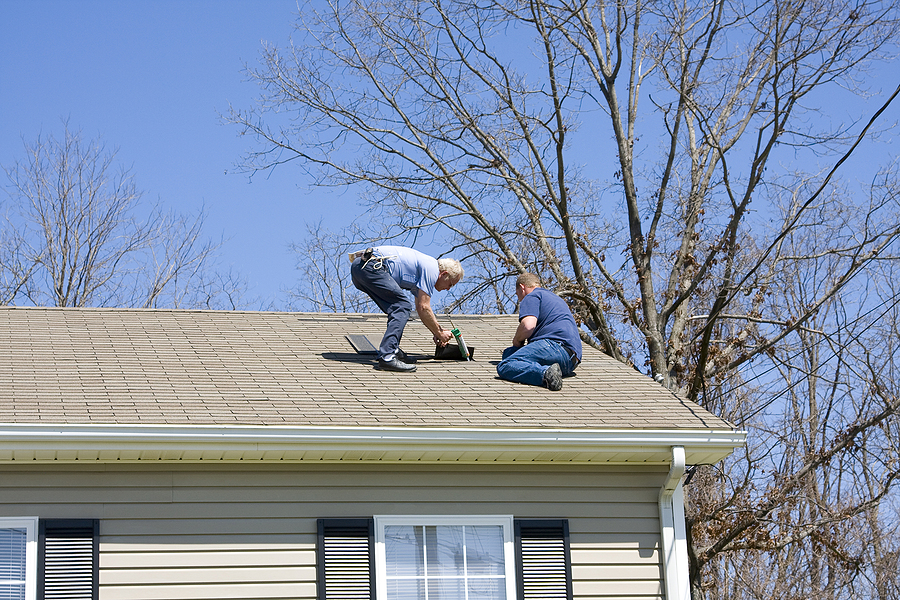When it comes to roofing, most homeowners focus on the visible parts, the shingles, flashing, gutters, and maybe the underlayment. But there’s one critical component of every roof that often gets overlooked: ventilation. Proper venting may not be something you can see from the street, but make no mistake, roof venting plays a massive role in your roof’s performance, energy efficiency, and longevity.
So why does it matter so much? And what happens when venting is ignored or done incorrectly during a new roof installation? In this post, we’ll break it all down in plain English so you can make better decisions about your next roofing project. It doesn’t matter whether you’re replacing a worn-out roof or building a new home, understanding why proper venting matters can save you from major headaches down the road.
What Is Roof Venting, Exactly?
Roof venting is the system that allows air to circulate through your attic and under your roofing system. It typically includes intake vents (usually at the soffits) and exhaust vents (often at the ridge of the roof). The goal is to let fresh air in while pushing warm, moist air out.
Think of your roof like a breathing system. Just as our lungs need to inhale and exhale to function properly, your home needs airflow to prevent excess heat and moisture from becoming trapped in the attic. When installed correctly, ventilation keeps temperatures in balance, extends the life of your roofing materials, and even helps lower energy costs.
Why Proper Venting Matters: The Big Picture
Here’s the deal: poor roof ventilation can lead to a cascade of problems. It’s one of those behind-the-scenes systems that, if done wrong, won’t show symptoms immediately. But over time, a poorly vented roof can contribute to serious and expensive issues like mold, rot, ice dams, and premature shingle failure.
So, why proper venting matters isn’t just about airflow, it’s about protecting your entire home. For example, excess attic heat during summer can cook your shingles from the inside out, dramatically reducing their lifespan. In winter, the same trapped heat can melt snow on your roof unevenly, causing ice dams that lead to water infiltration and damage.
When you choose a reputable roofing company, proper ventilation is part of the conversation from the start. At Atlas Roofing & Siding, we treat ventilation as a critical component of every new roof installation, not an afterthought. It’s not just about meeting code, it’s about doing the job right.
Signs of Poor Roof Ventilation
You don’t have to be a roofer to recognize poor ventilation. Some signs are obvious once you know what to look for. If you’ve noticed your attic is sweltering hot in the summer or icy cold in the winter, that’s a red flag. So is condensation on attic windows or rafters, moldy insulation, or a musty smell.
Another common sign is curling or blistering shingles, especially if they’re relatively new. That kind of damage can result from excessive attic heat. Ice dams forming at the edge of your roof during winter are also a telltale sign that your attic isn’t venting properly.
If any of these issues sound familiar, it may be time to call a roofing company that can perform a full inspection and recommend the right fix, not just for your shingles, but for your whole system.
The Role of Venting in New Roof Installation
During a new roof installation, venting should be part of the initial planning—not something tacked on at the end. A good roofing contractor will assess the design of your attic space, roof pitch, and local climate conditions to determine the best type and amount of ventilation.
There’s no one-size-fits-all solution. Some homes benefit most from a combination of soffit and ridge vents, while others may require gable vents, power fans, or solar-powered attic ventilators. What matters is balance: intake and exhaust vents must work together in harmony to create continuous airflow from the eaves to the ridge.
Atlas Roofing & Siding is both a roofing company and a siding company, which gives us a unique advantage when it comes to venting. Because siding and roofing meet at the soffits, it’s crucial that the venting system doesn’t interfere with siding performance, or vice versa. We coordinate all exterior systems to ensure your home breathes properly without compromising looks or protection.
Ventilation and Energy Efficiency
Another big reason why proper venting matters is energy savings. Without ventilation, heat builds up in your attic, making your air conditioner work overtime during the warmer months. Conversely, in winter, improper airflow can trap moisture and create cold spots that lead to higher heating bills.
A properly vented attic allows your HVAC system to run more efficiently, which translates to lower energy costs year-round. It also reduces the chances of mold growth, which thrives in warm, moist, stagnant air. That’s not just a maintenance issue, it’s a health concern.
Installing or improving attic ventilation during a new roof installation is one of the most cost-effective ways to improve your home’s energy performance. It’s a small upfront investment that pays off every month in lower utility bills and a longer roof lifespan.
Common Venting Mistakes to Avoid
Unfortunately, not all roofing contractors take venting seriously. We’ve seen plenty of homes where vents were installed but immediately blocked by insulation. Other times, vents are placed in the wrong positions, causing air to short-circuit before it flows through the attic.
In some cases, homes even have too many different types of vents installed, which can create pressure imbalances and airflow conflicts.
The most common mistake? Simply not having enough vents at all. Many older homes weren’t built with modern ventilation standards in mind, and that becomes a problem when a new roof goes on without upgrading the airflow system.
That’s why it’s important to choose a roofing company with the experience and integrity to get it right. At Atlas Roofing & Siding, we never cut corners, especially on something as important, and invisible, as ventilation.
Proper Venting Can Extend the Life of Your Roof
Shingle manufacturers agree: ventilation is essential. In fact, many roofing warranties are only valid if proper venting is installed. Without it, shingle adhesives may degrade faster, causing premature failure. Trapped heat can even damage the roof decking underneath, leading to costly structural repairs.
When you think about it, why proper venting matters is about more than comfort or code compliance, it’s about protecting the investment you’ve made in your roof. A little airflow goes a long way in extending the life of your materials and preventing the need for early replacement.
Ventilation and Energy Efficiency
Another big reason why proper venting matters is energy savings. Without ventilation, heat builds up in your attic, making your air conditioner work overtime during the warmer months. Conversely, in winter, improper airflow can trap moisture and create cold spots that lead to higher heating bills.
A properly vented attic allows your HVAC system to run more efficiently, which translates to lower energy costs year-round. It also reduces the chances of mold growth, which thrives in warm, moist, stagnant air. That’s not just a maintenance issue, it’s a health concern.
According to the U.S. Department of Energy, proper attic ventilation can reduce energy costs by up to 10-12% annually, especially in homes located in hot or humid climates. That kind of efficiency gain not only saves money—it extends the life of your roof by keeping temperature and moisture levels under control.
Installing or improving attic ventilation during a new roof installation is one of the most cost-effective ways to improve your home’s energy performance. It’s a small upfront investment that pays off every month in lower utility bills and longer roof lifespan.
The Atlas Roofing & Siding Approach
As a top-rated roofing company and siding company, we take a systems-based approach to roof installations. That means we don’t just show up with shingles and nails, we assess your roof from the inside out.
Before we install a single panel or hammer a nail, we evaluate your existing ventilation system and determine if it needs improvement. If so, we offer modern, energy-efficient solutions tailored to your home’s design. And because we handle both roofing and siding, we make sure everything works together perfectly, no interference, no oversights, no gaps.
Don’t Overlook Ventilation
If you’re planning a new roof installation, don’t make the mistake of ignoring attic ventilation. It’s easy to overlook, but costly to get wrong. Improper venting can lead to shingle damage, mold growth, energy loss, and warranty voids. On the flip side, a well-vented roof can extend the life of your roof, protect your attic structure, and lower your utility bills.
At Atlas Roofing & Siding, we’ve seen firsthand how ventilation issues can sneak up on homeowners. That’s why we take the time to do it right the first time, because that’s what your home deserves.
Ready for a New Roof? Let’s Talk Ventilation.
If you’re replacing your roof or building a new home, make sure you’re working with a team that understands why proper venting matters. Atlas Roofing & Siding brings expert-level knowledge, honest assessments, and decades of experience to every project.
Call today to schedule your free consultation and discover the right way to approach your new roof installation with ventilation that works as hard as the rest of your home.




